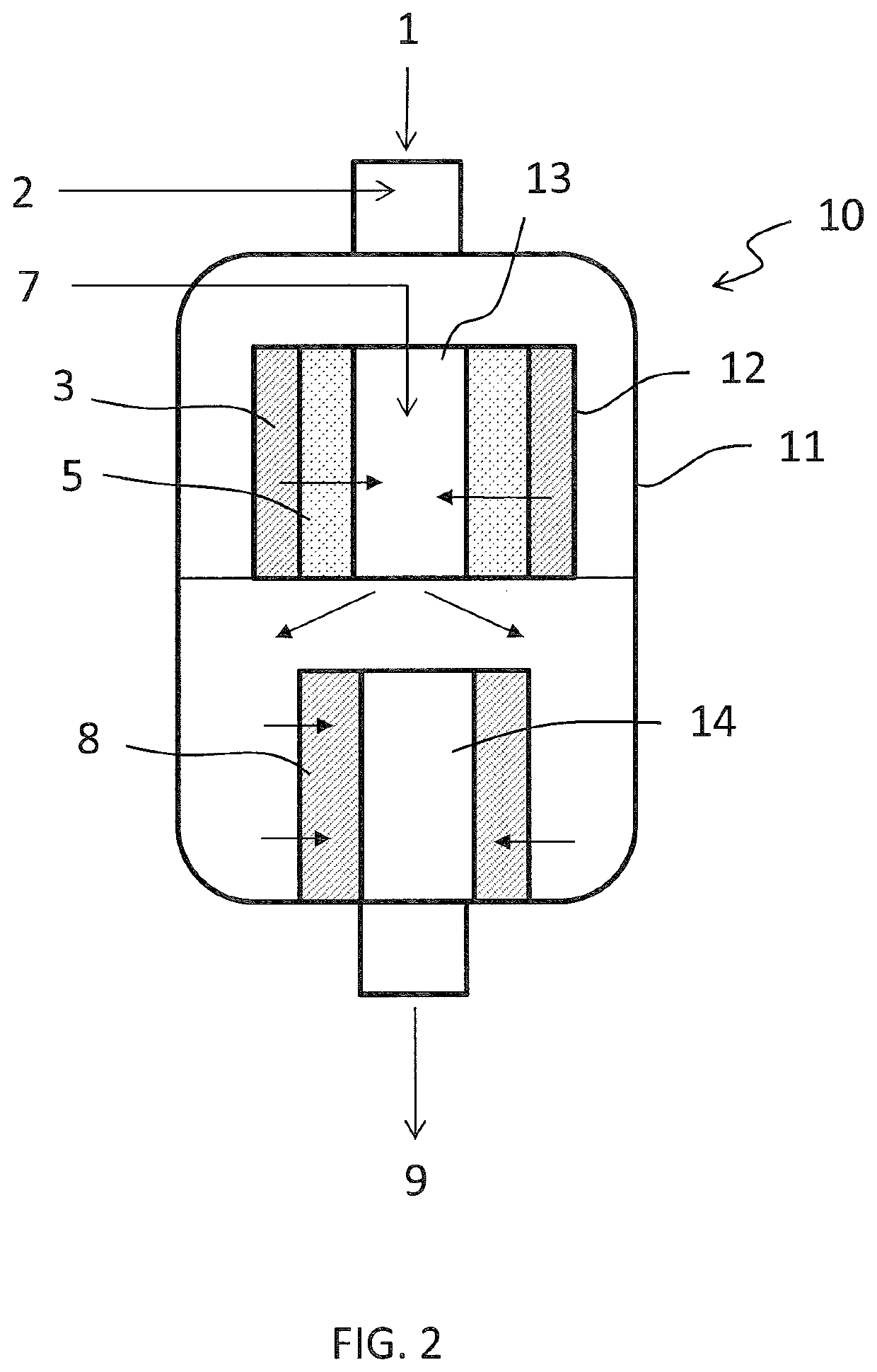Method and apparatus for removing NOx and N2O from a gas
a technology of nox and n2o, which is applied in the direction of physical/chemical process catalysts, metal/metal-oxide/metal-hydroxide catalysts, separation processes, etc., can solve the problems of unsatisfactory ammonia slip, environmental impact and may generate an additional cost, and the target concentration of nox may not be reached, so as to achieve easy control of ammonia flow and improve accuracy. , the effect of improving the accuracy
- Summary
- Abstract
- Description
- Claims
- Application Information
AI Technical Summary
Benefits of technology
Problems solved by technology
Method used
Image
Examples
example
[0049]An off gas 1 from synthesis of nitrous acid has a flowrate of 4100 kmol / h and contains 700 ppm of NOx (NO+NO2) and 900 ppm of N2O. The gas 1 further contains 3% of oxygen.
[0050]The first de-NOx catalytic bed 3 has a copper exchanged zeolite catalyst and a space velocity of 15000 h−1. Ammonia 2 is added in an amount corresponding to 560 ppm in the gas 1. After a passage over said bed 3, the effluent gas stream 4 contains 145 ppm of NOx and 950 ppm of N2O.
[0051]The de-N2O catalytic bed 5 has an iron exchanged zeolite catalyst and has a space velocity of 5000 h−1. After a passage over said de-N2O bed 5, the effluent gas 6 still contains 145 ppm of NOx but only 20 ppm of N2O.
[0052]Said gas 6 is added with ammonia 7 and passed over the second de-NOx catalytic bed 8. The set point of the flowrate of ammonia 7 corresponds to 140 ppm in the gas, being a function of the NOx still contained in the gas.
[0053]The second de-NOx catalytic bed 8 preferably has a vanadium oxide catalyst and a...
PUM
| Property | Measurement | Unit |
|---|---|---|
| molar ratio | aaaaa | aaaaa |
| molar ratio | aaaaa | aaaaa |
| temperature | aaaaa | aaaaa |
Abstract
Description
Claims
Application Information
 Login to View More
Login to View More - R&D
- Intellectual Property
- Life Sciences
- Materials
- Tech Scout
- Unparalleled Data Quality
- Higher Quality Content
- 60% Fewer Hallucinations
Browse by: Latest US Patents, China's latest patents, Technical Efficacy Thesaurus, Application Domain, Technology Topic, Popular Technical Reports.
© 2025 PatSnap. All rights reserved.Legal|Privacy policy|Modern Slavery Act Transparency Statement|Sitemap|About US| Contact US: help@patsnap.com


